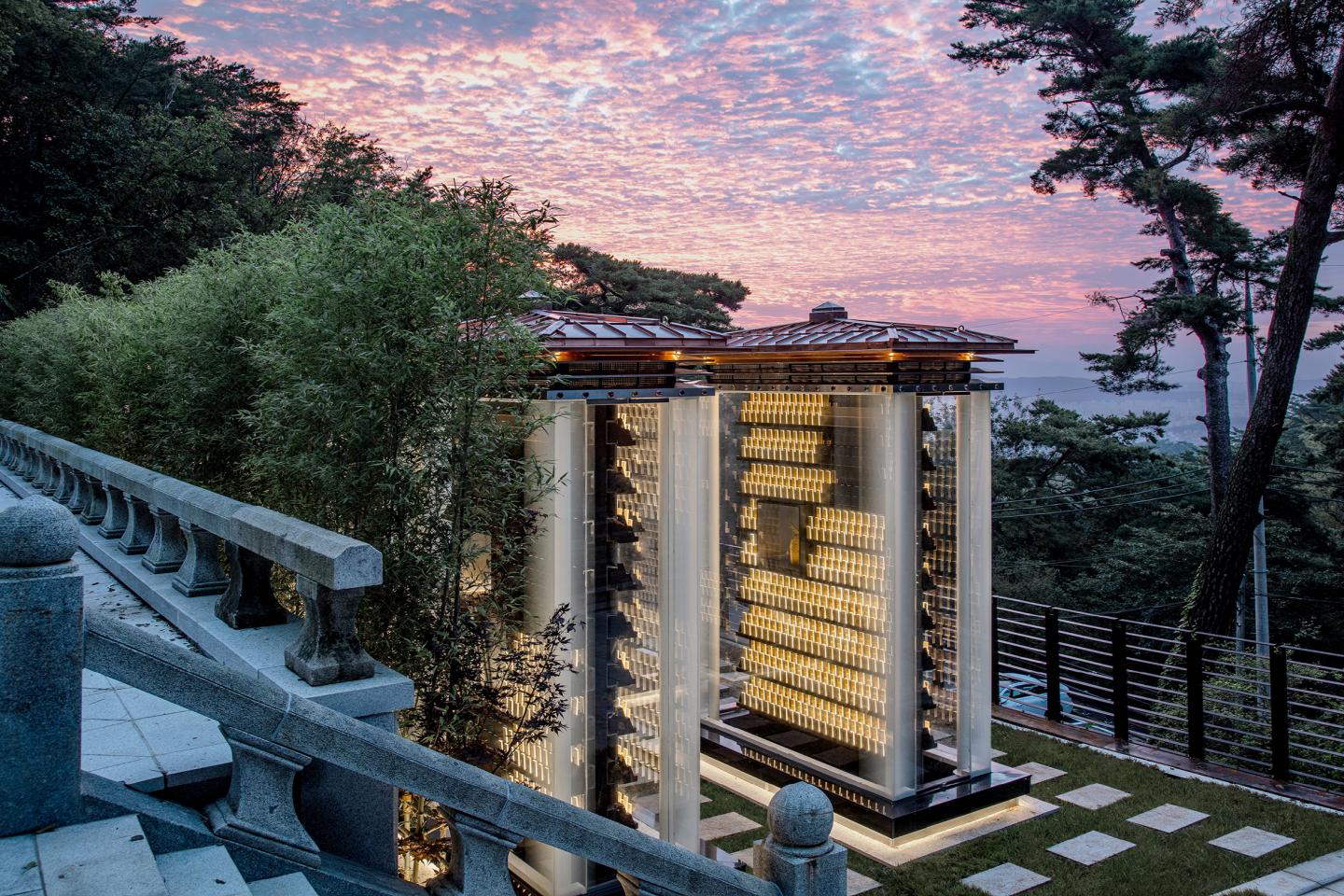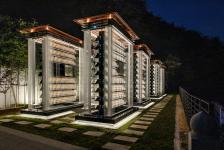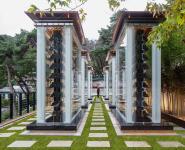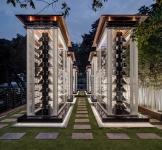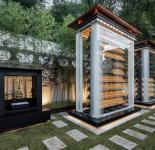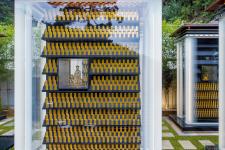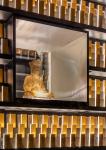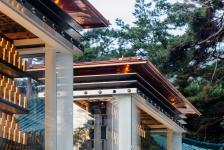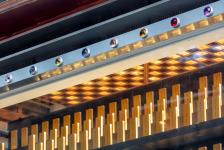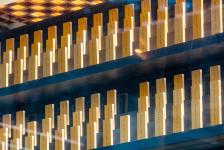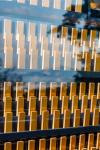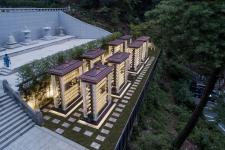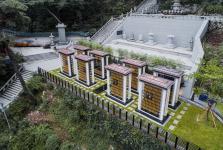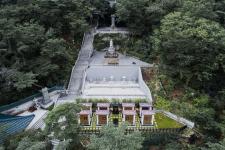Soul Forest, a sheltered place for souls, reveals a beautiful figure in the metropolitan area of Seoul, Korea.
Thousands of years ago, in East Asian countries, rituals have been carried out to engrave the name of a dead person on a tree and serve as a substitute for his soul.
Soul Forest, a leading aesthetically sublimating the boundary between the area of tradition and modernity, life and death, memorial and art, will serve as an opportunity to announce that a new genre of architecture in Korean Buddhist memorial culture has been opened. It was designed as a place to pray for deceased souls to take off the yoke of the Sabah world and sublimate in a space without gravity to go to the paradise world.
Soul Forest, consisting of 8 modern concept glass stupa, enshrines the Amitabha Buddha at the central altar and builds 8 bodhisattva inside the each stupa, establishing a new concept of outdoor paradise and guiding the soul of the dead. It will become a new attraction of Korean Buddhism that prays for the rebirth of paradise.
We have tried to embed defining elements of Buddhism and the Buddhist scriptures in the design concept of the Stupa.
First, the scriptures define the existence of Buddha as, ‘one that has neither come nor left.’ Therefore we can state that Buddha is simply the man as he exists. Therefore, the nine Buddha statues were designed in a metaphysical form through which light can penetrate.
Also, looking at the left and right sides of the Stupa, you can see that the stacked plaque form a 9-story stone pagoda.
Matter is void. All is vanity. This Buddhist expression shows that, as the boundary between matter and the void dissolves, existence is revealed as illusion and illusion as existence. The visible and invisible become inseparable. To express this aspect of Buddhist philosophy, we etched the glass corners in a gradiated pattern, seeking to blur the barriers between matter and the void.
The plaques of the deceased to be brought into it are illuminated by the soft lights on the back, as if they were light beams behind a Buddha statue.
Sending energy of mercy and light to souls who embrace and leave to the paradise world, especially at night when darkness falls on Sabah, about 10,000 lights like the starlight of the galaxy will unfold the world of flower garland sutra.
The transparent glass-like pond in front of the central altar is a place that reflects one's Karma as a so-called 'Eobkyeong-ji' and reflects on the virtues of 'eightfold path' that the general public must practice to advance into the world of Nirvana. It is also a pond.
The eight stupa ceilings are made of a mysterious scented tree, which will serve as a medium to reach the paradise, and under the eaves of the outside, seven jewels from the Amitabha sutra are installed to express the merit of the paradise world.
This architecture is a holy art that combines religious devotion and artistic sense, and will remain a symbol of faith.
2019
2020
Exterior material: Glass, Copper, Stone
Architect :Kyeongsik Yoon
Associated Architect : Yoonjung Kim
Client : Doseon-Sa Temple, Chief Rev. Songsan Doseo
Project Manager : Monk Doryong
Stupa Contractor : Yoonsung / Soohun Jung
Civil eng. & MEP : Eldrim / Ilsang Cho
Landscape Design : Gyutae Kim
Curtain Wall Construction : Woongjin Glass
Statue of Buddha : Art Director / Hoyoon Shin
Photographer : Jongoh Kim
Doseon-Sa Temple ; The Soul Forest (Stupa of Ancestral tablet) by Kyeongsik Yoon in Korea, South won the WA Award Cycle 35. Please find below the WA Award poster for this project.
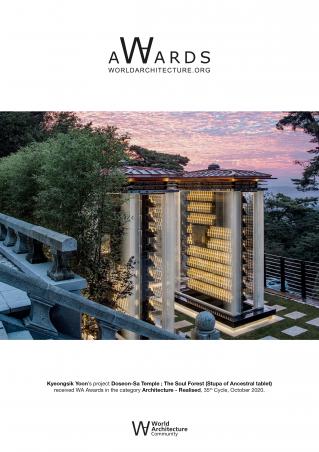
Downloaded 14 times.
